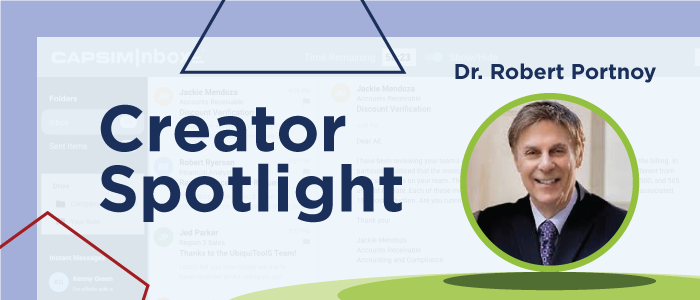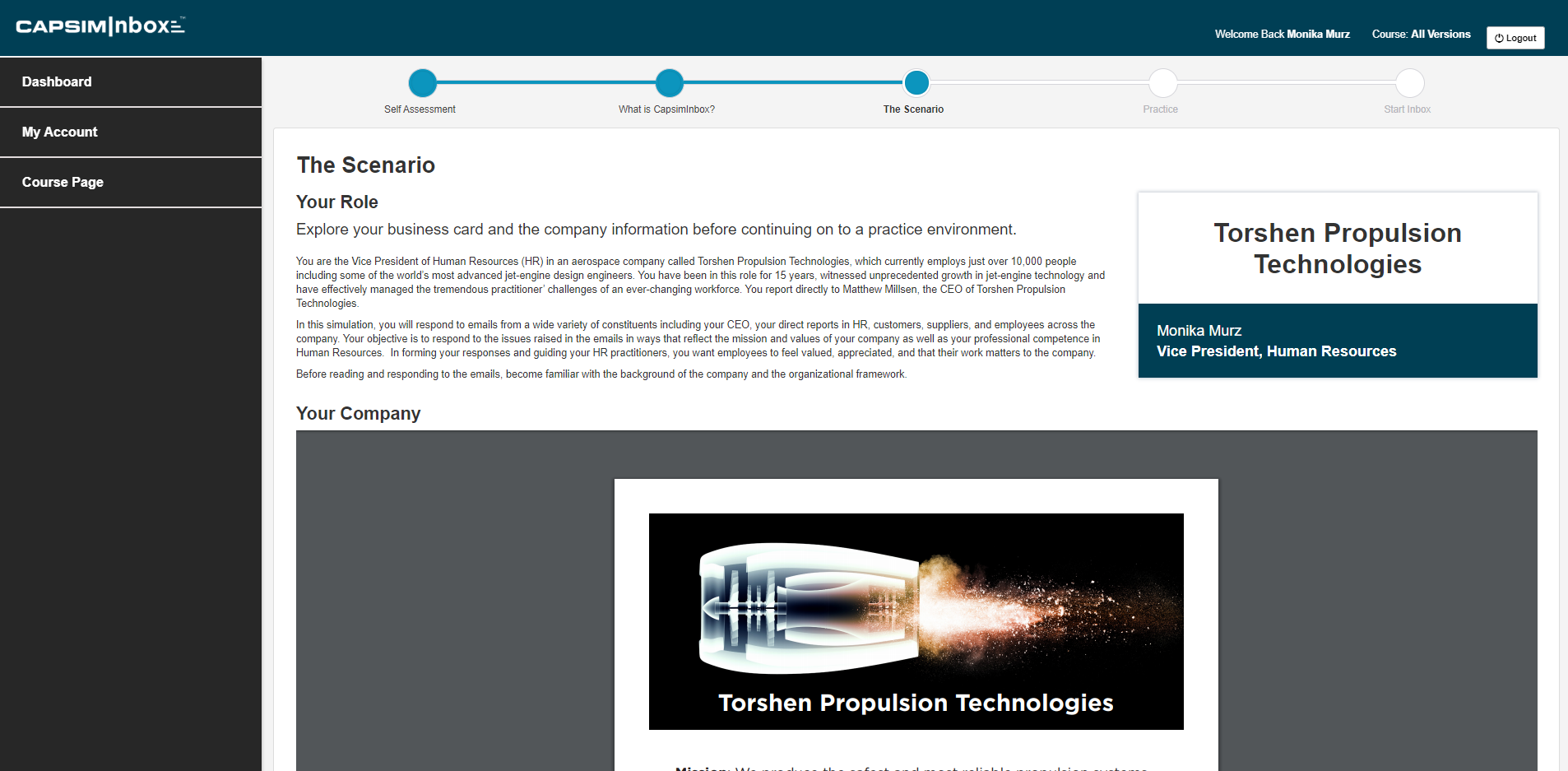Creator Spotlight: Dr. Robert Portnoy on Building an Inbox Simulation for Real-World HR Learning
June 5, 2020

After teaching Human Resource Management at Washington University in St. Louis’ business school, Dr. Robert Portnoy noticed a significant gap between what he was teaching in the classroom and his years of experience as a development specialist in the airline industry.
Traditional approaches to Human Resource Management instruction didn’t effectively prepare students to apply the concepts to real-world situations.
Learning from a textbook is important, Dr. Portnoy knows. “The textbook approach is going to give you the foundational knowledge, the theories,” Portnoy said. “But it won’t give you the opportunity to make critical decisions in real-time that will cause you to make and take decisive action.”
He wanted to bring the real world of HR into the classroom as realistically as he could.
“A great way of doing that is to immerse people in real-world experiences where they face all kinds of challenging problems in real-time,” Portnoy said. “Issues fly at them while they’re under some degree of pressure and they need to make decisions about best solutions to different kinds of problems they’re facing.”
So he set out to capture his real-world experiences with Capsim and authored the CapsimInbox: Human Resources microsimulation.
Dr. Portnoy’s goal was to focus on common situations HR practitioners experience. “Immersion itself needs to be realistic,” Dr. Portnoy said. “It needs to give students and HR practitioners the feeling that they’re actually in the situation, rather than facing a kind of simulation that doesn’t seem real.”
In CapsimInbox: Human Resources, students assume the role of the Vice President of Human Resources at an aerospace company called Torshen Propulsion Technologies, which currently employs just over 10,000 people, including some of the world’s most advanced jet-engine design engineers.
Students respond to emails from a wide variety of constituents, including the CEO, direct reports in HR, customers, suppliers, and employees. The objective is to respond to the issues raised in the emails in ways that reflect the mission and values of the company. In guiding HR practitioners, learners should aim for decisions to make employees feel valued, appreciated, and that their work matters to the company.
Dr. Portnoy shared how the people he interacted with daily in the workforce inspired the characters in his simulation. Participants experience a day in the life of an HR representative. A fellow executive may request a job placement for a particular individual—breaching professional protocols, violating procedures, and displaying favoritism. What is the HR practitioner to do? How can fairness best be ensured?
There may be a union organizing campaign in the parking lot of your company. Do you allow the union to influence your workers to vote and organize a campaign on your property? What are your rights? How can you best support your company and employees to make the best decisions?
Authoring an inbox simulation enabled Dr. Portnoy to leverage his experiences and expertise in the classroom and in the workplace to elevate his students’ learning.
As for how students reacted? They showed positive reactions—excited to try what it’s like to be a real-world HR practitioner. “Sort of like a flight simulator, where you’re in the cockpit,” Portnoy described. “Well in this case, you’re behind the controls of human resources. The decisions you make can impact a company. They’re decisions that require a lot of thought and decisive action.”
With the pre-release of the CapsimInbox Authoring Platform, it’s easier than ever for educators to create inbox simulations leveraging their unique experiences and knowledge to better engage and develop their students in any learning environment. If you want to gain access to our new authoring platform, click the button below to join our waitlist and we’ll get you started ASAP.
To hear some direct responses from Dr. Portnoy, watch this brief video.



.png?width=80&name=1-questions%20(1).png)